|
|
|

|
|
2019 (vol. 19)
|
|
Discussion on some previous records of Involutina hungarica (Sidó, 1952). Revision of the Jesse Harlan Johnson Collection. Part 6
Bruno GRANIER
| HTML  | PDF
| PDF  [2,044 KB]
| DOI: 10.4267/2042/70638 [2,044 KB]
| DOI: 10.4267/2042/70638
|
|
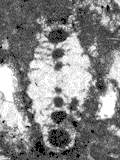 Abstract: Involutina
hungarica (Sidó,
1952) is reported from Albian strata of Texas (U.S.A.). Earlier records in the
scientific literature, where this foraminifer commonly appears under the label
"Hensonina lenticularis (Henson, 1947)", are
reevaluated. Although it is mostly cited from Albian strata, its first
occurrence could be Aptian. Abstract: Involutina
hungarica (Sidó,
1952) is reported from Albian strata of Texas (U.S.A.). Earlier records in the
scientific literature, where this foraminifer commonly appears under the label
"Hensonina lenticularis (Henson, 1947)", are
reevaluated. Although it is mostly cited from Albian strata, its first
occurrence could be Aptian.
|
|
Carnets Geol., vol. 19, no. 20, p. 445-455
Online since December 27, 2019
|
|
Ichnofossils associated with lingulide shells from the Lower Permian of Brazil
Olev VINN, Carolina ZABINI & Luiz Carlos C WEINSCHÜTZ
| HTML  | PDF
| PDF  [840 KB]
| DOI: 10.4267/2042/70636 [840 KB]
| DOI: 10.4267/2042/70636
|
|
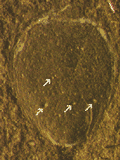 Abstract: Lingulides from Lower Permian of Brazil
(24% substrates) showed signs of bioerosion in form of multiple small shallow
pits that resemble incomplete Oichnus
paraboloides borings. A single lingulide valve showed a centrally located
large circular predatory Oichnus simplex
boring. Several lingulide shells (c. 21%) show small Arachnostega traces in their interior. The diameter of Arachnostega
burrows is relatively constant. These burrows are more similar to juvenile stages of Arachnostega gastrochaena
and do not form well-developed meshwork of tunnels. This is the first record of Arachnostega
from the interior of lingulide shells and indicates that even very small
lingulide shells were suitable substrates for cryptic organisms. Abstract: Lingulides from Lower Permian of Brazil
(24% substrates) showed signs of bioerosion in form of multiple small shallow
pits that resemble incomplete Oichnus
paraboloides borings. A single lingulide valve showed a centrally located
large circular predatory Oichnus simplex
boring. Several lingulide shells (c. 21%) show small Arachnostega traces in their interior. The diameter of Arachnostega
burrows is relatively constant. These burrows are more similar to juvenile stages of Arachnostega gastrochaena
and do not form well-developed meshwork of tunnels. This is the first record of Arachnostega
from the interior of lingulide shells and indicates that even very small
lingulide shells were suitable substrates for cryptic organisms.
|
|
Carnets Geol., vol. 19, no. 19, p. 439-444
Online since December 27, 2019
|
|
New data on the intergrowth of Rugosa-Bryozoa in the Lower Devonian of North Gondwana
Yves PLUSQUELLEC & Françoise P. BIGEY
| HTML  | PDF
| PDF  [3,864 KB]
| DOI: 10.4267/2042/70538 [3,864 KB]
| DOI: 10.4267/2042/70538
|
|
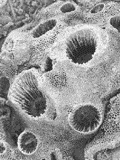 Abstract: Numerous and generally well-preserved examples of the
intergrowth Rugosa-Bryozoa from the Upper Pragian and Lower Emsian of the
Armorican Massif (Châteaulin and Laval synclinoria), France, and from the
Upper Emsian of the Ougarta Mountains, Erg Djemel, Algeria, are described. In
the Armorican Massif, the corallites of a rugosan Tryplasmatidae? are
intergrown with Ceramoporidae bryozoan close to Crepipora,
exceptionally with an unidentified Fistuliporidae (likely a new genus),
whereas in Ougarta the coral is not identifiable and is associated with a
Fistuliporidae assigned to Fistulipora.
Although mainly left in open nomenclature, the material is fully described
(structure and microstructure) and illustrated (calcitic skeleton and natural
moulds) for the first time. In addition, the presence of Ceramoporidae in the
Lower Devonian is clearly established. The evaluation of the association is
briefly discussed and a mutualistic relationship supported. Abstract: Numerous and generally well-preserved examples of the
intergrowth Rugosa-Bryozoa from the Upper Pragian and Lower Emsian of the
Armorican Massif (Châteaulin and Laval synclinoria), France, and from the
Upper Emsian of the Ougarta Mountains, Erg Djemel, Algeria, are described. In
the Armorican Massif, the corallites of a rugosan Tryplasmatidae? are
intergrown with Ceramoporidae bryozoan close to Crepipora,
exceptionally with an unidentified Fistuliporidae (likely a new genus),
whereas in Ougarta the coral is not identifiable and is associated with a
Fistuliporidae assigned to Fistulipora.
Although mainly left in open nomenclature, the material is fully described
(structure and microstructure) and illustrated (calcitic skeleton and natural
moulds) for the first time. In addition, the presence of Ceramoporidae in the
Lower Devonian is clearly established. The evaluation of the association is
briefly discussed and a mutualistic relationship supported.
|
|
Carnets Geol., vol. 19, no. 18, p. 421-437
Online since November 11, 2019
|
|
The bryozoan collection of Prof. Dr Ehrhard Voigt (1905–2004) at the Senckenberg Institute in Frankfurt. Part 3 - Ascophoran Cheilostomata and bibliography
Silviu O. MARTHA, Kei MATSUYAMA, Joachim SCHOLZ, Paul D. TAYLOR & Gero HILLMER
| HTML  | PDF
| PDF  [18,020 KB]
| DOI: 10.4267/2042/70501 [18,020 KB]
| DOI: 10.4267/2042/70501
|
|
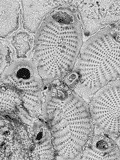 Abstract: The bryozoan collection of Prof. Dr Ehrhard Voigt (1905–2004) at the Senckenberg Research Institute in Frankfurt am Main,
Germany is a world-renowned collection of great scientific value. It is the
world's largest collection of fossil bryozoans from the Upper Cretaceous and
Paleocene and a unique archive documenting the evolution of this phylum of
marine invertebrates during this time interval in the Boreal Chalk Sea that
extended from the British Isles to the Aral Sea in Central Asia. Abstract: The bryozoan collection of Prof. Dr Ehrhard Voigt (1905–2004) at the Senckenberg Research Institute in Frankfurt am Main,
Germany is a world-renowned collection of great scientific value. It is the
world's largest collection of fossil bryozoans from the Upper Cretaceous and
Paleocene and a unique archive documenting the evolution of this phylum of
marine invertebrates during this time interval in the Boreal Chalk Sea that
extended from the British Isles to the Aral Sea in Central Asia.
The Voigt Collection contains over 300,000 specimens and was relocated to the Senckenberg
Institute in 2005 according to the bequest of Ehrhard Voigt. As a result of a
DFG-funded project, we present here a three-part type catalogue of the holotypes
and neotypes of 256 bryozoan species in the Voigt Collection, of which this is
Part 3. In total over the three parts, 247 species are re-illustrated but the
name-bearing type specimens of 20 species are missing and no material could be
found for 9 species. Two species, described as ctenostome bryozoans by Ehrhard Voigt, are questionable, while a further three 'ctenostome' species and one 'ctenostome'
genus are considered as ichnotaxa.
|
|
Carnets Geol., vol. 19, no. 17, p. 369-419
Online since October 10, 2019
|
|
Upper Jurassic-Lower Cretaceous limestones from the Hăghimaș Massif (Eastern Carpathians, Romania): Microfacies, microfossils and depositional environments
Olimpiu NEAMŢU, Ioan I. BUCUR, Răzvan UNGUREANU & Cristian Victor MIRCESCU
| HTML  | PDF
| PDF  [4,430 KB]
| DOI: 10.4267/2042/70499 [4,430 KB]
| DOI: 10.4267/2042/70499
erratum
PDF  [119
KB] [119
KB]
|
|
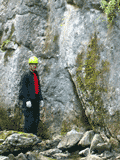 Abstract: The Hăgimaş
Massif provides important data for reconstructing the geological evolution of
the Transylvanian Carbonate Platform. This unit is present nowadays in the
basement of the Transylvanian Depression and as large-scale olistoliths, which
crop out in various locations in the Eastern Carpathians and Apuseni Mountains. They
contain a large variety of microfacies as well as microfossil assemblages partly
encompassing the Jurassic/Cretaceous boundary. This study presents a detailed
account of uppermost Jurassic-lowermost Cretaceous limestones from the Lapoş
Valley (Hăghimaş Mountains) containing two distinct successions
separated by a fault. The first succession contains platform margin and inner
platform deposits (subtidal, intertidal) whereas the second one consists of inner
platform deposits (shallow-subtidal to peritidal carbonates). The Upper Jurassic
Stramberk-type facies is overlain by lower Berriasian regressive peritidal
limestones. The upper Berriasian-? lower Valanginian consists mainly of inner
platform deposits. They contain alternating, high and low-energy carbonates with
rare calpionellids and calcispheres. The age assignment is based on a rich and
diverse micropaleontological assemblage containing similar biota reported from
other regions of the Tethysian Realm. Abstract: The Hăgimaş
Massif provides important data for reconstructing the geological evolution of
the Transylvanian Carbonate Platform. This unit is present nowadays in the
basement of the Transylvanian Depression and as large-scale olistoliths, which
crop out in various locations in the Eastern Carpathians and Apuseni Mountains. They
contain a large variety of microfacies as well as microfossil assemblages partly
encompassing the Jurassic/Cretaceous boundary. This study presents a detailed
account of uppermost Jurassic-lowermost Cretaceous limestones from the Lapoş
Valley (Hăghimaş Mountains) containing two distinct successions
separated by a fault. The first succession contains platform margin and inner
platform deposits (subtidal, intertidal) whereas the second one consists of inner
platform deposits (shallow-subtidal to peritidal carbonates). The Upper Jurassic
Stramberk-type facies is overlain by lower Berriasian regressive peritidal
limestones. The upper Berriasian-? lower Valanginian consists mainly of inner
platform deposits. They contain alternating, high and low-energy carbonates with
rare calpionellids and calcispheres. The age assignment is based on a rich and
diverse micropaleontological assemblage containing similar biota reported from
other regions of the Tethysian Realm.
|
|
Carnets Geol., vol. 19, no. 16, p. 345-368
Online since October 10, 2019
|
|
The bryozoan collection of Prof. Dr Ehrhard Voigt (1905–2004) at the Senckenberg Institute in Frankfurt. Part 2 - Ctenostomata and non-ascophoran Cheilostomata
Silviu O. MARTHA, Kei MATSUYAMA, Joachim SCHOLZ, Paul D. TAYLOR & Gero HILLMER
| HTML  | PDF
| PDF  [28,305 KB]
| DOI: 10.4267/2042/70498 [28,305 KB]
| DOI: 10.4267/2042/70498
|
|
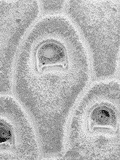 Abstract: The bryozoan collection of Prof. Dr Ehrhard Voigt (1905–2004) at the Senckenberg Research Institute in Frankfurt am Main,
Germany is a world-renowned collection of great scientific value. It is the
world's largest collection of fossil bryozoans from the Upper Cretaceous and
Paleocene and a unique archive documenting the evolution of this phylum of
marine invertebrates during this time interval in the Boreal Chalk Sea that
extended from the British Isles to the Aral Sea in Central Asia.
The Voigt
Collection contains over 300,000 specimens and was relocated to the Senckenberg
Institute in 2005 according to the bequest of Ehrhard Voigt. As a result of a
DFG-funded project, we present here a three-part type catalogue of the holotypes
and neotypes of 256 bryozoan species in the Voigt Collection, of which this is
Part 2. In total over the three parts, 247 species are re-illustrated but the
name-bearing type specimens of 20 species are missing and no material could be
found for 9 species. Two species, described as ctenostome bryozoans by Ehrhard Voigt, are questionable, while a further three 'ctenostome' species and one 'ctenostome'
genus are considered as ichnotaxa. Abstract: The bryozoan collection of Prof. Dr Ehrhard Voigt (1905–2004) at the Senckenberg Research Institute in Frankfurt am Main,
Germany is a world-renowned collection of great scientific value. It is the
world's largest collection of fossil bryozoans from the Upper Cretaceous and
Paleocene and a unique archive documenting the evolution of this phylum of
marine invertebrates during this time interval in the Boreal Chalk Sea that
extended from the British Isles to the Aral Sea in Central Asia.
The Voigt
Collection contains over 300,000 specimens and was relocated to the Senckenberg
Institute in 2005 according to the bequest of Ehrhard Voigt. As a result of a
DFG-funded project, we present here a three-part type catalogue of the holotypes
and neotypes of 256 bryozoan species in the Voigt Collection, of which this is
Part 2. In total over the three parts, 247 species are re-illustrated but the
name-bearing type specimens of 20 species are missing and no material could be
found for 9 species. Two species, described as ctenostome bryozoans by Ehrhard Voigt, are questionable, while a further three 'ctenostome' species and one 'ctenostome'
genus are considered as ichnotaxa.
|
|
Carnets Geol., vol. 19, no. 15, p. 287-344
Online since October 10, 2019
|
|
Historical review together with stratigraphical and taphonomical considerations on the upper Pleistocene deposit of Arenal de son Servera (Mallorca, Balearic Islands)
Rafel MATAMALES-ANDREU
| HTML  | PDF
| PDF  [1,165 KB]
| DOI: 10.4267/2042/70497 [1,165 KB]
| DOI: 10.4267/2042/70497
|
|
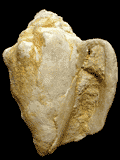 Abstract: The upper Pleistocene deposit of Arenal de son Servera
is reviewed using data from earlier works and new considerations based on its
stratigraphy and taphonomical aspects of the fossils. In the present study, five
different kinds of facies are identified: [1] palaeosols with
pebbles from the Miocene basement, [2] aeolianites, [3] foreshore deposits with
thermophilous molluscan fossil fauna, [4] palaeosols resulting from the pedogenesis
of the beach units, and [5] bioclastic channelled deposits eroding the underlaying
units. The detailed taphonomical analysis revealed that the fossils enclosed
in these rocks remained on the sea bottom for a significant amount of time, but
they were not bioeroded, perhaps because a submerged sand bar repeatedly buried
and exhumed them. In addition, the fact that Persististrombus
latus shells are in their position of maximum stability allows to
infer that they were washed up on the shore during moderately energetic events,
possibly comparable to present-day ordinary storms. These two last points could
be of interest to the field of coastal management, as they provide insight on
the scope of physical changes these systems could undergo in the present warming
of the Mediterranean. Abstract: The upper Pleistocene deposit of Arenal de son Servera
is reviewed using data from earlier works and new considerations based on its
stratigraphy and taphonomical aspects of the fossils. In the present study, five
different kinds of facies are identified: [1] palaeosols with
pebbles from the Miocene basement, [2] aeolianites, [3] foreshore deposits with
thermophilous molluscan fossil fauna, [4] palaeosols resulting from the pedogenesis
of the beach units, and [5] bioclastic channelled deposits eroding the underlaying
units. The detailed taphonomical analysis revealed that the fossils enclosed
in these rocks remained on the sea bottom for a significant amount of time, but
they were not bioeroded, perhaps because a submerged sand bar repeatedly buried
and exhumed them. In addition, the fact that Persististrombus
latus shells are in their position of maximum stability allows to
infer that they were washed up on the shore during moderately energetic events,
possibly comparable to present-day ordinary storms. These two last points could
be of interest to the field of coastal management, as they provide insight on
the scope of physical changes these systems could undergo in the present warming
of the Mediterranean.
|
|
Carnets Geol., vol. 19, no. 14, p. 277-285
Online since October 10, 2019
|
|
The bryozoan collection of Prof. Dr Ehrhard Voigt (1905–2004) at the Senckenberg Institute in Frankfurt. Part 1 - Introduction and Cyclostomata
Silviu O. MARTHA, Kei MATSUYAMA, Joachim SCHOLZ, Paul D. TAYLOR & Gero HILLMER
| HTML  | PDF
| PDF  [23,917 KB]
| DOI: 10.4267/2042/70493 [23,917 KB]
| DOI: 10.4267/2042/70493
|
|
 Abstract: The bryozoan collection of Prof. Dr Ehrhard Voigt
(1905–2004) at the Senckenberg Research Institute in Frankfurt am Main,
Germany is a world-renowned collection of great scientific value. It is the
world's largest collection of fossil bryozoans from the Upper Cretaceous and
Paleocene and a unique archive documenting the evolution of this phylum of
marine invertebrates during this time interval in the Boreal Chalk Sea that
extended from the British Isles to the Aral Sea in Central Asia. Abstract: The bryozoan collection of Prof. Dr Ehrhard Voigt
(1905–2004) at the Senckenberg Research Institute in Frankfurt am Main,
Germany is a world-renowned collection of great scientific value. It is the
world's largest collection of fossil bryozoans from the Upper Cretaceous and
Paleocene and a unique archive documenting the evolution of this phylum of
marine invertebrates during this time interval in the Boreal Chalk Sea that
extended from the British Isles to the Aral Sea in Central Asia.
The Voigt Collection contains over 300,000 specimens and was relocated to the Senckenberg
Institute in 2005 according to the bequest of Ehrhard Voigt. As a result of a
DFG-funded project, we present here a three-part type catalogue of the holotypes
and neotypes of 256 bryozoan species in the Voigt Collection, of which this is
Part 1. In total over the three parts, 247 species are re-illustrated but the
name-bearing type specimens of 20 species are missing and no material could be
found for 9 species. Two species, described as ctenostome bryozoans by Ehrhard
Voigt, are questionable, while a further three 'ctenostome' species and one 'ctenostome'
genus are considered as ichnotaxa.
|
|
Carnets Geol., vol. 19, no. 13, p. 221-275
Online since October 10, 2019
|
|
A new prospect in crinoid (Crinoidea, Echinodermata) research: An example from the Lower Jurassic of Montenegro
Mariusz A. SALAMON
| HTML  | PDF
| PDF  [935 KB]
| DOI: 10.4267/2042/70491 [935 KB]
| DOI: 10.4267/2042/70491
|
|
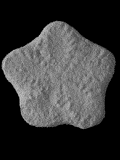 Abstract: Lower Jurassic (Hettangian-Pliensbachian)
shallow-marine ooidal limestones of southern Montenegro contain a large number
of isocrinid ossicles. They are assigned to the following taxa: Isocrinus
psilonoti (Quenstedt), Isocrinus
sp., and Pentacrinites cf. fossilis
Blumenbach. The echinoderm assemblage also yields
cyrtocrinid ossicles (Cotylederma sp., Cyrtocrinina indet.) and echinoid
spines (only spotted in thin sections); however, these elements are rare. Given
the fact that the recorded assemblage comes from a single locality, there is a
growing need for further research that will require intense sampling to compile
and complete the faunal list of crinoids and other echinoderm taxa. Abstract: Lower Jurassic (Hettangian-Pliensbachian)
shallow-marine ooidal limestones of southern Montenegro contain a large number
of isocrinid ossicles. They are assigned to the following taxa: Isocrinus
psilonoti (Quenstedt), Isocrinus
sp., and Pentacrinites cf. fossilis
Blumenbach. The echinoderm assemblage also yields
cyrtocrinid ossicles (Cotylederma sp., Cyrtocrinina indet.) and echinoid
spines (only spotted in thin sections); however, these elements are rare. Given
the fact that the recorded assemblage comes from a single locality, there is a
growing need for further research that will require intense sampling to compile
and complete the faunal list of crinoids and other echinoderm taxa.
|
|
Carnets Geol., vol. 19, no. 12, p. 211-220
Online since October 10, 2019
|
|
New findings of the genus Revalotrypa, the oldest bryozoan genus of Baltoscandia, in north-western Russia
Petr V. FEDOROV & Anna V. KOROMYSLOVA
| HTML  | PDF
| PDF  [954 KB]
| DOI: 10.4267/2042/70296 [954 KB]
| DOI: 10.4267/2042/70296
|
|
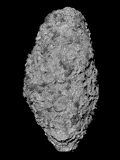 Abstract: New findings of esthonioporate bryozoans of the species Revalotrypa cf. inopinata,
representing one of the oldest bryozoans of Baltoscandia, are described from an
outcrop located in Leningrad Oblast' (north-western Russia). The colonies of
this species are very small and were extracted from limestone-cemented nodules
found in glauconitic sandstones of the lower part of the Joa Member (Paroistodus
proteus conodont zone, lowermost Floian, Lower Ordovician). Combined X-ray
microtomography and the examination of traditional thin sections under a
stereomicroscope and a light microscope were used to study the morphology of
this species. Abstract: New findings of esthonioporate bryozoans of the species Revalotrypa cf. inopinata,
representing one of the oldest bryozoans of Baltoscandia, are described from an
outcrop located in Leningrad Oblast' (north-western Russia). The colonies of
this species are very small and were extracted from limestone-cemented nodules
found in glauconitic sandstones of the lower part of the Joa Member (Paroistodus
proteus conodont zone, lowermost Floian, Lower Ordovician). Combined X-ray
microtomography and the examination of traditional thin sections under a
stereomicroscope and a light microscope were used to study the morphology of
this species.
|
|
Carnets Geol., vol. 19, no. 11, p. 199-209
Online since August 8, 2019
|
|
Abundant occurrence of Aspidiscus cristatus (Lamarck, 1801) in the "Marnes de Smail" Formation from the Batna area (NE-Algeria): Index species for the Middle Cenomanian
Sihem SALMI-LAOUAR, Bruno FERRÉ & Riadh AOUISSI
| HTML  | PDF
| PDF  [1,295 KB]
| DOI: 10.4267/2042/70294 [1,295 KB]
| DOI: 10.4267/2042/70294
|
|
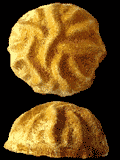 Abstract: The
Cenomanian marls of the Batna region (NE Algeria) display several fossiliferous
beds with highly diversified fauna. Among the abundant and well-preserved
fossils stands out Aspidiscus cristatus (Lamarck, 1801). This
coral taxon is assigned to the Family Latomeandridae Alloiteau, 1952, due
to the presence of pennulae and inner septal margins with slight perforations.
In the studied sections Aspidiscus cristatus is found in beds ranging
from the Cunningtoniceras inerme Zone to the Acanthoceras amphibolum
Zone, with a relative abundance within the Acanthoceras cf.
rhotomagense Zone. This species is subsequently a good marker for the
Middle Cenomanian in the Batna district. We give herein a systematic and
paleontological description and discuss the paleoenvironmental and paleogeographic
framework of this taxon. Actually the outer morphology of its test, with convex
outer surface and planar to concave inner surface, suggests an adaptation to
mud-supported, low-energy marine environments with high sedimentary rate. The
paleogeographic range of this taxon, with often larger-size specimens on the
southern and eastern margins of the Tethysian Realm, than those on the northern
margin, supports very peculiar thermal gradient and climactic zone, with
relatively warmer waters on the southern Tethysian margin during the Cenomanian,
favoring a more frequent and more effective bioerosion on fossil specimens from
southern Tethysian areas than that affecting specimens from northern Tethysian areas. Abstract: The
Cenomanian marls of the Batna region (NE Algeria) display several fossiliferous
beds with highly diversified fauna. Among the abundant and well-preserved
fossils stands out Aspidiscus cristatus (Lamarck, 1801). This
coral taxon is assigned to the Family Latomeandridae Alloiteau, 1952, due
to the presence of pennulae and inner septal margins with slight perforations.
In the studied sections Aspidiscus cristatus is found in beds ranging
from the Cunningtoniceras inerme Zone to the Acanthoceras amphibolum
Zone, with a relative abundance within the Acanthoceras cf.
rhotomagense Zone. This species is subsequently a good marker for the
Middle Cenomanian in the Batna district. We give herein a systematic and
paleontological description and discuss the paleoenvironmental and paleogeographic
framework of this taxon. Actually the outer morphology of its test, with convex
outer surface and planar to concave inner surface, suggests an adaptation to
mud-supported, low-energy marine environments with high sedimentary rate. The
paleogeographic range of this taxon, with often larger-size specimens on the
southern and eastern margins of the Tethysian Realm, than those on the northern
margin, supports very peculiar thermal gradient and climactic zone, with
relatively warmer waters on the southern Tethysian margin during the Cenomanian,
favoring a more frequent and more effective bioerosion on fossil specimens from
southern Tethysian areas than that affecting specimens from northern Tethysian areas.
|
|
Carnets Geol., vol. 19, no. 10, p. 185-197
Online since August 8, 2019
|
|
The lower Aptian ammonites of the Les Ferres Aptian Basin (Lower Cretaceous, Southeast of France). Part I: Introduction and biostratigraphy
Stéphane BERSAC & Didier BERT
| HTML  | PDF
| PDF  [4,427 KB]
| DOI: 10.4267/2042/70292 [4,427 KB]
| DOI: 10.4267/2042/70292
|
|
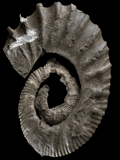 Abstract: On the southern margin of the
Vocontian Basin (SE France), for taphonomic reasons (fragmentation, reworking,
pyritization), lower Aptian (Lower Cretaceous) deposits of the interval between
the Deshayesites deshayesi and Dufrenoyia furcata zones are
usually not suitable for studying the late ontogenetic developments of ammonites
(fossil cephalopods). In the vicinity of the village of Les Ferres (Department
of the Alpes-Maritimes, SE France), a relatively thick sedimentary succession
with well-preserved ammonites, representative of the zones mentioned above, is
found in a small basin called the "Les Ferres Aptian Basin" (LFAB). The
1262 ammonites collected or studied in situ are dated from the Deshayesites
forbesi Zone through the top of the Dufrenoyia furcata Zone. This
study presents the lithostratigraphy, biostratigraphy derived from these
ammonites, and the respective range of these taxa. This is an introductory
contribution to any future palaeontological study of the lower Aptian ammonites
in the Les Ferres area. The lithologic unit overlying the Hauterivian-Aptian
limestones is introduced herein as the Les Graous Formation. It is subdivided in
three members, from bottom to top: 1) the Combe de Joinet Member, 2) the Pont de
la Cerise Member, and 3) the Les Graous Member. In addition, two remarkable
levels are identified: the Ammonitoceras level (outstandingly abundant)
and the Toxoceratoides bed. Abstract: On the southern margin of the
Vocontian Basin (SE France), for taphonomic reasons (fragmentation, reworking,
pyritization), lower Aptian (Lower Cretaceous) deposits of the interval between
the Deshayesites deshayesi and Dufrenoyia furcata zones are
usually not suitable for studying the late ontogenetic developments of ammonites
(fossil cephalopods). In the vicinity of the village of Les Ferres (Department
of the Alpes-Maritimes, SE France), a relatively thick sedimentary succession
with well-preserved ammonites, representative of the zones mentioned above, is
found in a small basin called the "Les Ferres Aptian Basin" (LFAB). The
1262 ammonites collected or studied in situ are dated from the Deshayesites
forbesi Zone through the top of the Dufrenoyia furcata Zone. This
study presents the lithostratigraphy, biostratigraphy derived from these
ammonites, and the respective range of these taxa. This is an introductory
contribution to any future palaeontological study of the lower Aptian ammonites
in the Les Ferres area. The lithologic unit overlying the Hauterivian-Aptian
limestones is introduced herein as the Les Graous Formation. It is subdivided in
three members, from bottom to top: 1) the Combe de Joinet Member, 2) the Pont de
la Cerise Member, and 3) the Les Graous Member. In addition, two remarkable
levels are identified: the Ammonitoceras level (outstandingly abundant)
and the Toxoceratoides bed.
|
|
Carnets Geol., vol. 19, no. 9, p. 149-183
Online since August 8, 2019
|
|
The nomenclatural status of Palaeothrissum inaequilobum Blainville, 1818, P. parvum Blainville, 1818, and Aeduella blainvillei (Agassiz, 1833) (Actinopterygii, Aeduellidae)
Arnaud BRIGNON
| HTML  | PDF
| PDF  [576 KB]
| DOI: 10.4267/2042/70290 [576 KB]
| DOI: 10.4267/2042/70290
|
|
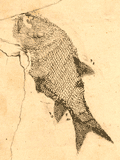 Abstract: It is shown that the species names Palaeothrissum inaequilobum Blainville,
1818, and P. parvum Blainville, 1818, from the Lower Permian
(Asselian) of Muse, near Autun (Saône-et-Loire department, France) are senior synonyms of the widely used
species name, Aeduella blainvillei (Agassiz, 1833). In the interest of nomenclatural stability, conditions exist which allow reversal of precedence as stated in Article 23.9.1 of the International Code of Zoological Nomenclature. Thus the species name Aeduella blainvillei (Agassiz,
1833) is regarded as valid, qualifying as a nomen protectum, whereas Palaeothrissum inaequilobum Blainville,
1818, and P. parvum Blainville, 1818, are invalid, qualifying as nomina oblita. Some of the specimens from the type series upon which P. inaequilobum, P. parvum and Aeduella blainvillei were erected, are identified. Abstract: It is shown that the species names Palaeothrissum inaequilobum Blainville,
1818, and P. parvum Blainville, 1818, from the Lower Permian
(Asselian) of Muse, near Autun (Saône-et-Loire department, France) are senior synonyms of the widely used
species name, Aeduella blainvillei (Agassiz, 1833). In the interest of nomenclatural stability, conditions exist which allow reversal of precedence as stated in Article 23.9.1 of the International Code of Zoological Nomenclature. Thus the species name Aeduella blainvillei (Agassiz,
1833) is regarded as valid, qualifying as a nomen protectum, whereas Palaeothrissum inaequilobum Blainville,
1818, and P. parvum Blainville, 1818, are invalid, qualifying as nomina oblita. Some of the specimens from the type series upon which P. inaequilobum, P. parvum and Aeduella blainvillei were erected, are identified.
|
|
Carnets Geol., vol. 19, no. 8, p. 141-148
Online since August 8, 2019
|
|
Observations on some Actinoporellas (Chlorophyta, Polyphysaceae). Revision of the Jacques Emberger Collection. Part 1
Bruno GRANIER
| HTML  | PDF
| PDF  [5,236 KB]
| DOI: 10.4267/2042/70196 [5,236 KB]
| DOI: 10.4267/2042/70196
|
|
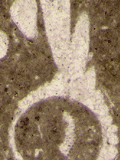 Abstract: On the occasion of the inventory of the J. Emberger Collection, specimens from the "Lower
Cretaceous" (Valanginian and Hauterivian) of Algeria, which are referable
to the genus Actinoporella (Gümbel in Alth) and which were
earlier identified to its type-species A. podolica (Alth) by Conrad
et al., are re-examined. They correspond to two discrete species, one of
which could be a junior synonym of A. podolica, a synonymy that remains
pending because it would require a new sampling at the original locality in
western Ukraine some 140 years after the original specimens, now lost, were
collected. Regarding their age ascription, they are Tithonian and/or Berriasian
in age, i.e., latest Jurassic (sensu Oppel) in age, not
earliest Cretaceous. In addition to these two Actinoporellas, a third discrete
species, initially described as Clypeina nigra (Conrad & Peybernès),
but later referred to the genus Actinoporella, is revised. New data
justify its re-ascription to the genus Bakalovaella Bucur.
Finally, it is now confirmed that both the Polyphysaceae and the modern
Dasycladaceae derive from the Diploporaceae either directly or indirectly
through the ancestral Dasycladaceae. Abstract: On the occasion of the inventory of the J. Emberger Collection, specimens from the "Lower
Cretaceous" (Valanginian and Hauterivian) of Algeria, which are referable
to the genus Actinoporella (Gümbel in Alth) and which were
earlier identified to its type-species A. podolica (Alth) by Conrad
et al., are re-examined. They correspond to two discrete species, one of
which could be a junior synonym of A. podolica, a synonymy that remains
pending because it would require a new sampling at the original locality in
western Ukraine some 140 years after the original specimens, now lost, were
collected. Regarding their age ascription, they are Tithonian and/or Berriasian
in age, i.e., latest Jurassic (sensu Oppel) in age, not
earliest Cretaceous. In addition to these two Actinoporellas, a third discrete
species, initially described as Clypeina nigra (Conrad & Peybernès),
but later referred to the genus Actinoporella, is revised. New data
justify its re-ascription to the genus Bakalovaella Bucur.
Finally, it is now confirmed that both the Polyphysaceae and the modern
Dasycladaceae derive from the Diploporaceae either directly or indirectly
through the ancestral Dasycladaceae.
|
|
Carnets Geol., vol. 19, no. 7, p. 113-139
Online since May 31, 2019
|
|
New data on some type-species of Maastrichtian-Paleocene Dasycladales (Green algae) from Iran. Part I. Pseudocymopolia Elliott, 1970
Koorosh RASHIDI & Felix SCHLAGINTWEIT
| HTML  | PDF
| PDF  [2,525 KB]
| DOI: 10.4267/2042/70194 [2,525 KB]
| DOI: 10.4267/2042/70194
|
|
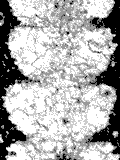 Abstract: Pseudocymopolia
anadyomenea, the type-species of the
genus, was described by Elliott (1959) from the Maastrichtian of Iraq.
Besides the type-locality, it was also recorded from the upper Maastrichtian
Tarbur Formation of Iran, from Afghanistan and Tibet. A rich but
moderately preserved material is analyzed herein, evidencing the presence of two
discrete species: P. anadyomenea and P.
acuta n. sp. The new species is characterized by its thallus morphology
displaying tapering, keeled segment margins. Besides the morphology, both are
also distinguished by biometric parameters such as the outer diameter (D), inner
diameter (d), and the d/D ratio. All other Lower Cretaceous species of Pseudocymopolia as well as the Maastrichtian P. anadyomenea have rounded segment margins. Both taxa from the
Tarbur Formation occur in inner platform quiet water depositional settings
whereas the Lower Cretaceous representatives typically characterize platform
margin deposits. Abstract: Pseudocymopolia
anadyomenea, the type-species of the
genus, was described by Elliott (1959) from the Maastrichtian of Iraq.
Besides the type-locality, it was also recorded from the upper Maastrichtian
Tarbur Formation of Iran, from Afghanistan and Tibet. A rich but
moderately preserved material is analyzed herein, evidencing the presence of two
discrete species: P. anadyomenea and P.
acuta n. sp. The new species is characterized by its thallus morphology
displaying tapering, keeled segment margins. Besides the morphology, both are
also distinguished by biometric parameters such as the outer diameter (D), inner
diameter (d), and the d/D ratio. All other Lower Cretaceous species of Pseudocymopolia as well as the Maastrichtian P. anadyomenea have rounded segment margins. Both taxa from the
Tarbur Formation occur in inner platform quiet water depositional settings
whereas the Lower Cretaceous representatives typically characterize platform
margin deposits.
|
|
Carnets Geol., vol. 19, no. 6, p. 97-111
Online since May 31, 2019
|
|
Upper Devonian Griottes Limestone in NW Sahara (Algeria): Facies, environments and geodynamic significance
Abdelkader ABBACHE, Abdelkader OUALI MEHADJI, Catherine CRÔNIER, Ahmed Hamza FELLAH, Ninon ALLAIRE & Claude MONNET
| HTML  | PDF
| PDF  [3,405 KB]
| DOI: 10.4267/2042/70192 [3,405 KB]
| DOI: 10.4267/2042/70192
|
|
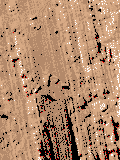 Abstract: On the NW margin of
the Algerian Sahara in the Bechar (Ben-Zireg), Ougarta (Marhouma) and
Gourara (Charouine) basins, the Upper Devonian
"griottes" nodular
limestone was deposited during the Frasnian and the Famennian. These
alternating clayey-sand-limestone
deposits are rich in ammonoids. These facies vary laterally and in
thickness in these three areas. These
facies variations are directly related to depositional environmental
conditions (hydrodynamism, basin physiography, sedimentary gaps). In the
three studied areas, the griotte facies were deposited
on a deep seabed platform and in basins under tectono-eustatic control.
In the Ben-Zireg area platform facies
are throughout the studied stratigraphic interval. In the Marhouma area,
the facies change through time first as distal ramp sedimentation
(Frasnian Ia), then shifting to an apron slope sedimentation with
allodapic facies
(Famennian II, VI and V), and
then in basinal settings (Famennian II and VI). Finally, at the end of
the
Famennian, the series ended with sandy-clay slope sedimentation (lower
member of the Ouarourout sandstone), and next platform sedimentation
(upper member of Ouarourout sandstone) topped by an
emersion surface. In the Charouine area, basin clays (hemipelagites)
dominate the
facies. The presence of asphaltene impregnations in the griotte facies
and in centimetric slabs
to metric blocks of the facies posterior to nodular limestones implies
the effects of early
diagenesis. This process played an important role in the sulphate
reduction and the anaerobic oxidation of methane (biogenic and / or
thermal). The segregation of sedimentary areas with griotte facies seems
to be
influenced by basement fragmentation. Indeed, the griotte facies closely
follow the Pan-African flexure. In Ougarta, the
"South Ougartian" fault corresponds to the extension of the
mega-lineament of Tibesti. The reactivation of Precambrian basement
faults during the
Late Devonian may have been responsible for the observed contrasting
facies. Abstract: On the NW margin of
the Algerian Sahara in the Bechar (Ben-Zireg), Ougarta (Marhouma) and
Gourara (Charouine) basins, the Upper Devonian
"griottes" nodular
limestone was deposited during the Frasnian and the Famennian. These
alternating clayey-sand-limestone
deposits are rich in ammonoids. These facies vary laterally and in
thickness in these three areas. These
facies variations are directly related to depositional environmental
conditions (hydrodynamism, basin physiography, sedimentary gaps). In the
three studied areas, the griotte facies were deposited
on a deep seabed platform and in basins under tectono-eustatic control.
In the Ben-Zireg area platform facies
are throughout the studied stratigraphic interval. In the Marhouma area,
the facies change through time first as distal ramp sedimentation
(Frasnian Ia), then shifting to an apron slope sedimentation with
allodapic facies
(Famennian II, VI and V), and
then in basinal settings (Famennian II and VI). Finally, at the end of
the
Famennian, the series ended with sandy-clay slope sedimentation (lower
member of the Ouarourout sandstone), and next platform sedimentation
(upper member of Ouarourout sandstone) topped by an
emersion surface. In the Charouine area, basin clays (hemipelagites)
dominate the
facies. The presence of asphaltene impregnations in the griotte facies
and in centimetric slabs
to metric blocks of the facies posterior to nodular limestones implies
the effects of early
diagenesis. This process played an important role in the sulphate
reduction and the anaerobic oxidation of methane (biogenic and / or
thermal). The segregation of sedimentary areas with griotte facies seems
to be
influenced by basement fragmentation. Indeed, the griotte facies closely
follow the Pan-African flexure. In Ougarta, the
"South Ougartian" fault corresponds to the extension of the
mega-lineament of Tibesti. The reactivation of Precambrian basement
faults during the
Late Devonian may have been responsible for the observed contrasting
facies.
|
|
Carnets Geol., vol. 19, no. 5, p. 71-96
Online since May 31, 2019
|
|
New stratigraphic and genetic model for the dolomitic Cretaceous Pinda reservoirs in Angola. Part II - Compelling arguments against early dolomitization and early leaching
Bruno GRANIER
| HTML  | PDF
| PDF  [3,099 KB]
| DOI: 10.4267/2042/69773 [3,099 KB]
| DOI: 10.4267/2042/69773
|
|
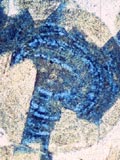 Abstract: This
is the second contribution to the stratigraphic and genetic model of the Pinda
Group. The mid-Cretaceous Pinda
Group of the Congo basin in the northern Angolan offshore is a transgressive
supersequence. Its lower part is made of Bufalo
and Pacassa facies that correspond respectively to mixed and calcareous-dolomitic
grain-dominated fabrics. Both facies were strongly diagenetically altered, mostly
by dolomitic replacement and leaching. Contrary to opinions expressed by other
authors that both styles of alteration are early diagenetic phenomena, there is
substantial evidence for a burial origin with dolomitic replacement and leaching
of calcite having started at depths not less than 150 m and 400 m, respectively. Abstract: This
is the second contribution to the stratigraphic and genetic model of the Pinda
Group. The mid-Cretaceous Pinda
Group of the Congo basin in the northern Angolan offshore is a transgressive
supersequence. Its lower part is made of Bufalo
and Pacassa facies that correspond respectively to mixed and calcareous-dolomitic
grain-dominated fabrics. Both facies were strongly diagenetically altered, mostly
by dolomitic replacement and leaching. Contrary to opinions expressed by other
authors that both styles of alteration are early diagenetic phenomena, there is
substantial evidence for a burial origin with dolomitic replacement and leaching
of calcite having started at depths not less than 150 m and 400 m, respectively.
|
|
Carnets Geol., vol. 19, no. 4, p. 47-70
Online since February 15, 2019
|
|
The "avatars" of Triloculina laevigata Orbigny, 1826, generic and specific attribution
Armelle POIGNANT
| HTML  | PDF
| PDF  [1,280 KB]
| DOI: 10.4267/2042/69756 [1,280 KB]
| DOI: 10.4267/2042/69756
|
|
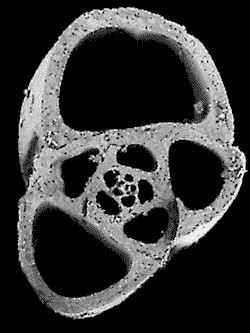 Abstract: The purpose of this study is to
clarify the problem posed by Triloculina laevigata Orbigny, 1826, nom. nud., described and figured by Fornasini in
1905. An other species, also called Triloculina
laevigata was created by Bornemann in 1855 and Orbigny's
specific name became invalid. This invalidity was only recently assessed and
numerous authors still use the original assignation. Consequently, it seems
necessary to erect a new name. After listing the various
names, revising the subgenus and genera attributed to Triloculina
laevigata, and comparing fossil and recent specimens, the name: Affinetrina alcidi Lévy et
al., 1992a, is confirmed. Abstract: The purpose of this study is to
clarify the problem posed by Triloculina laevigata Orbigny, 1826, nom. nud., described and figured by Fornasini in
1905. An other species, also called Triloculina
laevigata was created by Bornemann in 1855 and Orbigny's
specific name became invalid. This invalidity was only recently assessed and
numerous authors still use the original assignation. Consequently, it seems
necessary to erect a new name. After listing the various
names, revising the subgenus and genera attributed to Triloculina
laevigata, and comparing fossil and recent specimens, the name: Affinetrina alcidi Lévy et
al., 1992a, is confirmed.
|
|
Carnets Geol., vol. 19, no. 3, p. 35-46
Online since February 4, 2019
|
|
Uteria naghanensis n. sp. (Dasycladale) from the Upper Maastrichtian of Iran
Koorosh RASHIDI & Felix SCHLAGINTWEIT
| HTML  | PDF
| PDF  [1,498 KB]
| DOI: 10.4267/2042/69755 [1,498 KB]
| DOI: 10.4267/2042/69755
|
|
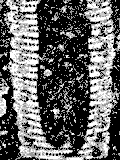 Abstract: A new dasycladalean alga is described
as Uteria naghanensis n. sp. from the
late Maastrichtian Tarbur Formation of the Zagros Zone, SW Iran. It is a small
to medium-sized, rather well calcified species with small articles each bearing
one fertile ampulla, alternating with close-set verticils of numerous sterile
laterals. Another characteristic is its comparably wide main axis. The genus Uteria
Michelin was so far only known from the Paleogene (Danian-Lutetian). The
discovery of U. naghanensis n. sp. in
inner platform wackestone of the Tarbur Fm. documents the origination of the
genus already in the uppermost Cretaceous within an area belonging to the
Arabian Plate. Abstract: A new dasycladalean alga is described
as Uteria naghanensis n. sp. from the
late Maastrichtian Tarbur Formation of the Zagros Zone, SW Iran. It is a small
to medium-sized, rather well calcified species with small articles each bearing
one fertile ampulla, alternating with close-set verticils of numerous sterile
laterals. Another characteristic is its comparably wide main axis. The genus Uteria
Michelin was so far only known from the Paleogene (Danian-Lutetian). The
discovery of U. naghanensis n. sp. in
inner platform wackestone of the Tarbur Fm. documents the origination of the
genus already in the uppermost Cretaceous within an area belonging to the
Arabian Plate.
|
|
Carnets Geol., vol. 19, no. 2, p. 21-33
Online since February 3, 2019
|
|
Reinstatement of the genus Bakalovaella Bucur, 1993 (Dasycladeae, Dasycladaceae), and a description of its earliest Cretaceous representative
Bruno R.C. GRANIER & Ioan I. BUCUR
| HTML  | PDF
| PDF  [3,082 KB]
| DOI: 10.4267/2042/69540 [3,082 KB]
| DOI: 10.4267/2042/69540
|
|
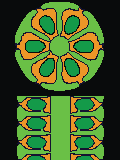 Abstract: A new
Dasycladacean species found in Hauterivian strata in Aquitaine is described. It
is ascribed to the genus Bakalovaella Bucur, 1993, which is
reinstated here. From a phylogenetic point of view, based of the
"lifting piston" model, this taxon should be part of a lineage
derived from the Diploporaceae. Abstract: A new
Dasycladacean species found in Hauterivian strata in Aquitaine is described. It
is ascribed to the genus Bakalovaella Bucur, 1993, which is
reinstated here. From a phylogenetic point of view, based of the
"lifting piston" model, this taxon should be part of a lineage
derived from the Diploporaceae.
|
|
Carnets Geol., vol. 19, no. 1, p. 1-19
Online since January 17, 2019
|
|
|
|